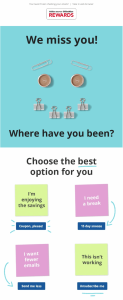
Rejection hurts. Salespeople don’t like to hear the word no, but the sound reverberates in their ears a lot more than most of them would care to admit. Instead of putting your head in the sand and admitting defeat, buck up! True selling doesn’t even start until you hear the word no.
Most salespeople learn early on how to constructively handle rejection: Keep emotions in check and don’t take it personally. But great salespeople know how to turn rejection into an opportunity. Below are three ways you can turn a no into a yes (or at least a maybe):
- Find out what they don’t like: Oftentimes, prospects say no because it’s the easiest and fastest way to get rid of you and get back to what they were doing, not because there’s no interest. When a prospective buyer says no, find out why and have him or her clarify what exactly is undesirable about your offering. It could just be that the intended target needs more information about the product or service, or they have a minor concern.
- Get rid of the “I”: Most salespeople make the mistake of approaching prospects with a slew of “I” statements—“I provide X, Y and Z,” “I can help you …”—which turns buyers off. Prospects care most about their own needs, challenges and concerns. If you focus the conversation on them, they’re more likely to engage with you. Replacing the “I” with a “you” can make a world of difference.
- Don’t take no for an answer: People—especially C-suite decision makers—often say no as a first reaction. Don’t let them. Instead, show your willingness to work with them and prove that you’re truly interested in helping them better their businesses. Do your homework beforehand and have talking points ready for every possible objection they may throw at you. Remember that polite persistence usually pays off.
While there are a variety of tips sales agents can keep in mind when dealing with rejection, adhering to these three bits of advice will help them inch closer to closing deals.
Business & Finance Articles on Business 2 Community
(310)
Report Post







